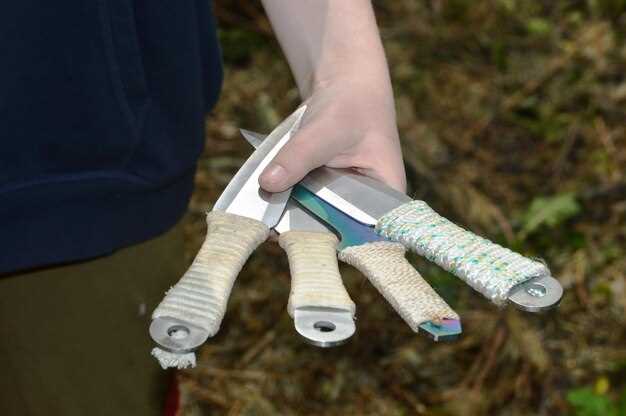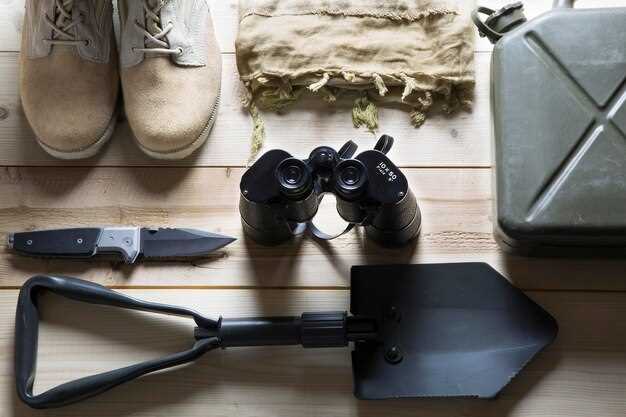
When it comes to hunting, the field dressing process is a crucial skill that every hunter should master. This essential preparation not only ensures that the game is handled properly but also affects the quality of the meat that will be brought home. Understanding the tools and techniques for effective field dressing can make a significant difference in your success rate and overall hunting experience.
Field dressing requires a combination of the right equipment and an understanding of proper techniques. Hunters should equip themselves with the necessary tools such as sharp knives, gloves, and game bags. Each tool plays a vital role in the prepping process, allowing for a clean and efficient method of removing internal organs and ensuring the meat remains in good condition. Having the right tools at hand can save time and effort in the long run, allowing hunters to focus on the task at hand.
Knowing how to effectively dress your catch in the field is about more than just having the right gear; it’s also about employing proper techniques. From understanding the anatomy of the game to ensuring that all necessary steps are followed to prevent contamination, mastering these techniques will enhance not only your efficiency but also your confidence as a hunter. This article will delve into the specific tools and techniques that contribute to successful field dressing, ensuring that you are well-prepared for your next hunting adventure.
Choosing the Right Tools for Field Dressing

Selecting the appropriate tools for field dressing game is essential for efficiency and effectiveness. The right equipment can significantly impact the quality of the processing and the overall experience. A well-equipped hunter can ensure a quicker and cleaner dressing of the animal, minimizing the risk of spoilage or contamination.
Firstly, a sharp knife is paramount. A good field dressing knife should be lightweight, easy to handle, and able to maintain a sharp edge. Look for a blade with a length of around 3 to 5 inches, as this size offers the ideal balance between control and cutting capability. Additionally, consider a knife with a fixed blade for durability and reliability during the dressing process.
In addition to the primary knife, a backup or secondary knife can be beneficial. A small, folding knife or a specialized gut hook knife can aid in incision and provide flexibility in various situations. Some hunters also opt for multi-tools that include different blades and saws, which can be handy for other tasks while in the field.
Beyond knives, a good pair of gloves is essential. Disposable nitrile gloves or high-quality rubber gloves provide a barrier against contamination while maintaining dexterity. This is crucial when handling game and ensuring hygiene during the dressing process.
A game bag or packing system is also an important tool to consider. Utilizing a durable game bag allows hunters to transport the dressed animal efficiently while helping to keep the meat clean and free from dirt or debris. Some bags come with additional features, such as waterproof materials or insulation, which can be advantageous in various weather conditions.
Finally, carrying a bone saw can be advantageous, especially when hunting larger game. A compact and lightweight saw enables hunters to section the carcass easily, making transportation more manageable.
Overall, outfitting yourself with the right tools tailored to your hunting style and the game you’re pursuing can lead to a successful field dressing experience. Taking the time to invest in quality equipment will pay dividends in the field, making the process smoother and more efficient.
Step-by-Step Guide to Game Preparation in the Field

Proper field dressing of game is crucial for maintaining meat quality and ensuring a successful hunt. Following these key steps will aid in efficient and ethical preparation in the field.
Step 1: Gather Your Tools
Before you start, ensure you have all necessary tools at hand. Essential items include a sharp knife, gloves, a game bag, and a small saw if you plan to break any bones. Having these tools ready will streamline the dressing process.
Step 2: Position the Animal
Once the game is down, position the animal on its back, ensuring it is stable. Elevate the hindquarters slightly, using natural materials or gear, to facilitate drainage of internal fluids.
Step 3: Make the Initial Cut
Starting at the breastbone, make a careful incision through the hide. Be cautious not to puncture the internal organs. Extend the cut down to the pelvic area, creating a flap of skin that can be pulled back during dressing.
Step 4: Open the Abdomen
Continue to gently cut through the abdominal wall. Use your knife blade facing upwards to avoid cutting into the organs. The goal is to create a clean opening that allows access to the internal cavity.
Step 5: Remove Internal Organs
Once the abdomen is open, carefully pull out the internal organs. Start with the intestines and work your way towards the diaphragm. Make the cuts necessary to detach the organs, and be mindful of avoiding any contamination of the meat.
Step 6: Clean the Cavity
After removal, inspect the cavity for any remaining debris. Rinse with cold water, if possible, to ensure it is clean. This step is vital for preserving the meat’s quality during transport.
Step 7: Hang the Game
If conditions allow, hang the game by the hind legs in a cool, shaded area. This encourages proper cooling and prevents spoilage. Ensure it is protected from pests and direct sunlight.
Step 8: Transport
Once field dressing is complete and the game has cooled, carefully place it in a game bag. Keep the meat elevated and cool during transport. This minimizes the risk of spoilage before reaching your final destination.
By following these detailed steps, you can ensure that your game is properly dressed in the field, enhancing its quality for consumption and contributing to a responsible hunting practice.
Common Mistakes to Avoid During Field Dressing
Field dressing game is a critical procedure that ensures the meat remains clean and safe for consumption. However, several common mistakes can undermine this process, leading to waste and potential health risks.
One significant error is failing to properly prepare before starting the dressing. It’s essential to have all necessary tools readily available, including a sharp knife, gloves, and a game bag, to avoid unnecessary delays and complications during the process.
Another common mistake is improper positioning of the game. It’s crucial to position the animal securely and in a way that allows for efficient access to vital areas. Failing to do so can lead to unnecessary cuts and damage to the meat.
Rushing through the dressing process is also a frequent pitfall. Taking your time allows for careful cuts that can prevent contamination and preserve the quality of the meat. Quick, hasty moves often result in accidental punctures to internal organs, which can spoil the meat and pose health risks.
Neglecting hygiene is another mistake that should be avoided. Always wear gloves, and ensure your tools are clean to maintain a sanitary environment during field dressing. Contamination can easily occur if precautions are not taken, adversely affecting the meat’s safety.
Additionally, some hunters forget to remove certain organs during dressing, such as the gastrointestinal tract, which can lead to spoilage if not done correctly. Knowing exactly which organs to remove and how to do so efficiently is key to successful field dressing.
Lastly, failing to adequately cool the meat after dressing can result in rapid spoilage, especially in warmer weather. Proper cooling methods, such as ensuring air circulation around the carcass, should be implemented immediately after dressing to maintain meat integrity.


